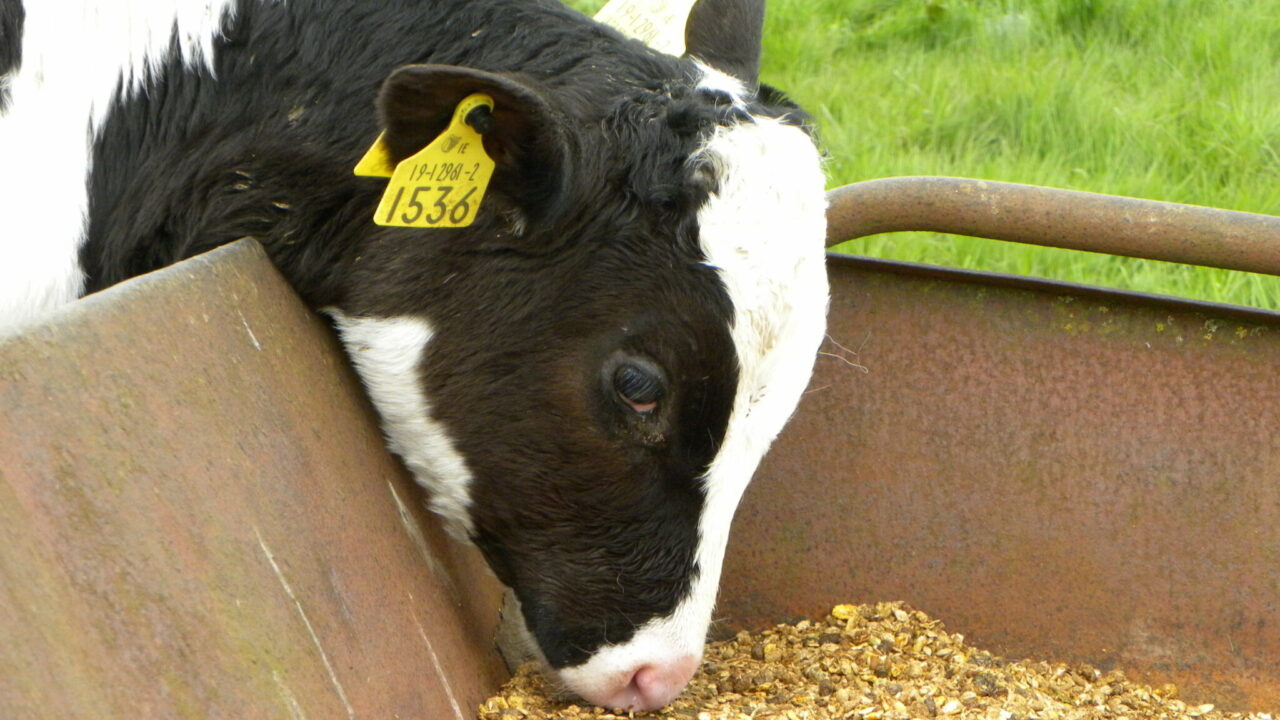The role of Spanish straw in Irish calf diets has been highlighted by Fane Valley Feeds’ technical support manager, Matthew Armstrong.
“Local straw is good enough,” he said.
“But what we are getting from Spain is a forage source with a consistently short and uniform chops length that is highly suited to the nutritional needs of young calves.
“This is a message that I am picking up from numerous dairy farmers at the present time.”
According to Armstrong, the availability of clean straw will help boost concentrate intakes with young calves from a very early age.

He made the comments at a recent calf rearing event, hosted in the Fane Valley store at Clogher Mart in Co. Tyrone.
Armstrong said: “Wheat straw is the preferred option. Good quality hay can be offered to calves.
“However, it does not seem to drive concentrate intakes as would be the case with straw.”
Consistent diet
The Fane Valley Feeds’ representative confirmed the need to maintain calves on a consistent diet both pre- and post-weaning.
“Animals should be maintained on a high quality concentrate, straw and water diet until they are five-months-of-age,” he said.
“At this point, it is feasible to introduce grass silage.”
Where spring-born calves are concerned, Armstrong said that problems will arise if seven-weeks-of-age calves are turned out into lush green pastures and expected to met their nutritional needs from a diet that includes large amounts of grazed grass.
“The calves do not have fully developed rumens at that stage, which is why summer scours can become an issue with these animals,” he said.
Nuts
Turning to the issue of crunch versus a cubed concentrate source, Armstrong confirmed the benefits of offering young calves concentrates in the form of molasses-coated nuts.
He explained: “Our own trials comparing the use of different calf feed options confirm the benefits of offering concentrates in the form of a pelleted nut.
“Weaning weights are consistently heavier when this approach is taken.
“The comparisons were made using concentrates of the same nutritional specification.”

The Fane Valley representative went on to confirm that nut size also impacts on calf growth rates.
He commented: “Our work has shown that calves fed 6mm nuts will achieve heavier weaning weights than those offered 3mm pencils.
“It has also been shown that available energy is a bigger driver of calf performance than protein.
“Trial work has shown that protein values of around 16% are adequate in calf concentrate. But starch, which is found in maize and cereals, is critically important.
“The key metabolic pathway here is the conversion of starch to glucose.
“Calves must also be given the best possible start. And this means providing the highest quality feeds at all times,” he added.

